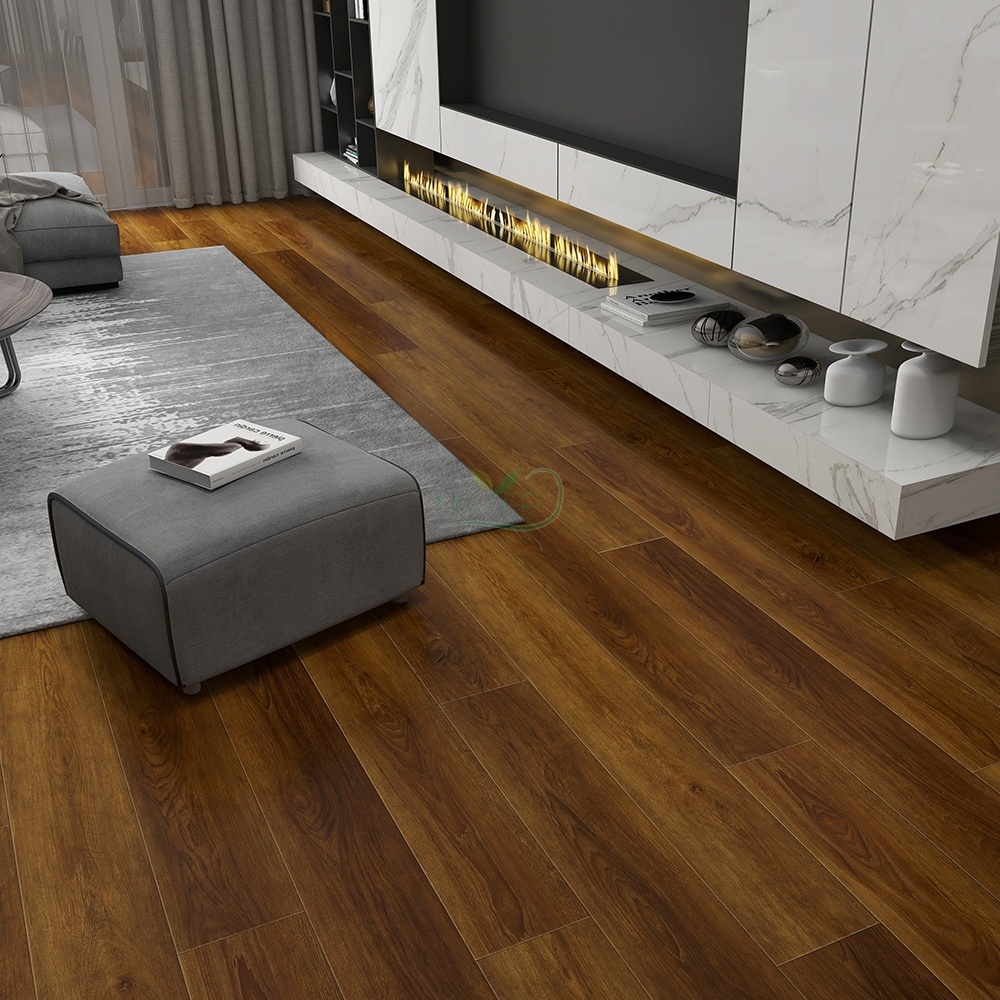When it comes to choosing the perfect flooring for your home or commercial space, there are numerous options available, each with its own set of benefits and considerations. Two popular choices that often get compared are Stone Plastic Composite (SPC) flooring and engineered hardwood flooring. While both offer durability and versatility, there are distinct differences between the two that can influence your decision. In this article, we'll delve into the differences between SPC flooring and engineered hardwood flooring, examining their composition, installation, durability, maintenance, and environmental impact.

Composition:
The primary difference between SPC flooring and engineered hardwood flooring lies in their composition:
SPC Flooring:
SPC flooring is a type of luxury vinyl flooring that is engineered with a rigid core composed of limestone powder, polyvinyl chloride (PVC), and stabilizers. This solid core gives SPC flooring its unique characteristics, including enhanced stability, durability, and resistance to moisture and temperature fluctuations. On top of the rigid core, SPC flooring features a printed decorative layer that replicates the look of natural materials such as wood or stone, as well as a wear layer for added protection against scratches and stains.
Engineered Hardwood Flooring:
Engineered hardwood flooring is made from layers of real wood veneer adhered to a plywood or high-density fiberboard (HDF) core. Unlike solid hardwood flooring, which is made from a single piece of wood, engineered hardwood consists of multiple layers that are bonded together under heat and pressure. This construction method gives engineered hardwood flooring greater stability and resistance to moisture compared to solid hardwood flooring.
Installation:
Another key difference between SPC flooring and engineered hardwood flooring is their installation method:
SPC Flooring:
SPC flooring is typically installed as a floating floor, which means it is not attached to the subfloor and instead "floats" over it. This installation method is made possible by the click-lock or interlocking system present on the edges of each plank, allowing them to be snapped together securely. Floating installation makes SPC flooring suitable for DIY enthusiasts and professional installers alike, as it can be installed quickly and with minimal mess.
Engineered Hardwood Flooring:
Engineered hardwood flooring can be installed using various methods, including floating, glue-down, or nail-down installation. The installation method will depend on factors such as the subfloor type, room layout, and personal preference. While floating installation is possible with some engineered hardwood products, glue-down or nail-down installation is more common, especially in high-traffic areas or spaces prone to moisture.
 |  |
Durability:
When it comes to durability, both SPC flooring and engineered hardwood flooring offer distinct advantages:
SPC Flooring:
SPC flooring is known for its exceptional durability and resistance to scratches, dents, and stains. The solid core construction and wear layer provide added protection against wear and tear, making SPC flooring suitable for high-traffic areas in both residential and commercial settings. Additionally, SPC flooring is waterproof, making it ideal for installation in areas prone to moisture, such as bathrooms, kitchens, and basements.
Engineered Hardwood Flooring:
Engineered hardwood flooring offers durability and stability, thanks to its layered construction. While engineered hardwood flooring is more resistant to moisture compared to solid hardwood flooring, it is not entirely waterproof and may be susceptible to damage in areas with high humidity or standing water. However, with proper maintenance and care, engineered hardwood flooring can last for many years and add value to your home.
Maintenance:
Maintenance requirements also differ between SPC flooring and engineered hardwood flooring:
SPC Flooring:
SPC flooring is known for its low maintenance requirements, making it an attractive option for busy homeowners and commercial spaces. Regular sweeping and mopping with a damp cloth or mild detergent are typically all that is needed to keep SPC flooring clean and looking its best. Additionally, SPC flooring's resistance to scratches and stains means it retains its appearance for longer, reducing the need for frequent maintenance and refinishing.
Engineered Hardwood Flooring:
Engineered hardwood flooring requires regular maintenance to keep it looking its best. While engineered hardwood flooring can be cleaned using a damp mop or hardwood floor cleaner, it is important to avoid excessive moisture and standing water, as these can cause damage to the wood veneer and core layers. Additionally, engineered hardwood flooring may need to be refinished periodically to restore its appearance and protect against wear and tear.
Environmental Impact:
Finally, the environmental impact of SPC flooring and engineered hardwood flooring should be considered:
SPC Flooring:
SPC flooring is made from synthetic materials such as PVC, which raises concerns about its environmental impact. While SPC flooring is often recyclable and may contain recycled content, its production process involves the use of fossil fuels and chemicals, which can contribute to air and water pollution. Additionally, the disposal of SPC flooring at the end of its life cycle may pose environmental challenges.
Engineered Hardwood Flooring:
Engineered hardwood flooring is considered a more sustainable option compared to solid hardwood flooring, as it uses less wood and can be made from fast-growing tree species or reclaimed wood. Additionally, engineered hardwood flooring can be recycled or repurposed at the end of its life cycle, reducing its environmental impact. However, the use of adhesives and finishes in the production process may raise concerns about indoor air quality and chemical emissions.
In conclusion, while SPC flooring and engineered hardwood flooring offer distinct advantages and considerations, the right choice will depend on factors such as budget, design preferences, and lifestyle needs. By understanding the differences between the two types of flooring, homeowners and designers can make informed decisions that meet their requirements and contribute to the long-term beauty and functionality of their spaces.



